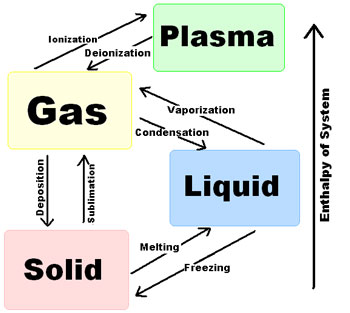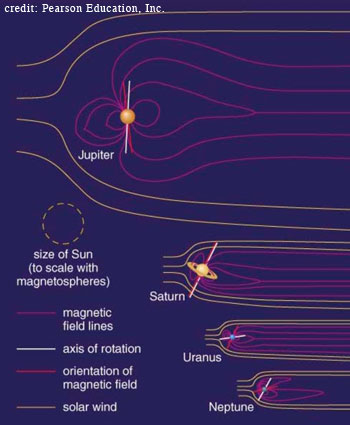
Dust and PlasmaDust and Plasma
SUMMARY: The dust in our solar system is created by collisions between comets, asteroids, and meteorites. Plasma is an ionized gas that serves many different purposes on Earth, as well as in the interplanetary medium.
Interplanetary Dust
How is it distributed?
Why do we care about dust?
What's the dust made of?
Missions mapping dust
Plasma
Plasma in the interplanetary medium
Interplanetary Dust
Most of the dust in our solar system comes from collisions between asteroids, comets, meteoroids, and Kuiper belt objects. More than half of the interplanetary dust particles in our solar system come from the asteroid belt. Collisions between solar system bodies, like asteroids and comets, create miniscule particles that break off during impact. Particles range in size and can even be 10,000 times smaller than a millimeter, thinner than the width of a human hair! Over time, any of this debris could have migrated inward to the inner solar system, or outward towards the orbit of Neptune.
How is it distributed?

This image is a computer simulation of the possible dust distribution in our solar system. The bar at the bottom shows the number of particles per AU2. The green line shows the path of the New Horizons Spacecraft.
Although we have ideas about how dust is distributed in the solar system, we don't know exactly what that distribution looks like. A few missions attempted to map the distribution and got a fairly good picture, but these spacecraft were miniscule compared to the volume of the solar system. A spacecraft a few cubic meters in volume can only sweep out a very small fraction of our solar system along its journey. From the measurements they made, scientists had to extrapolate using computer modeling to figure out what the rest of the solar system looks like. It's kind of like trying to figure out what the ocean looks like after only scooping out a bucketful.
From the information collected, interplanetary dust is distributed very sparsely across the solar system and there is no known distribution for the dust. In other words, the amount of dust surrounding Saturn might be the same as the amount between the orbits of Jupiter and Saturn. We can also speculate that there are fewer particles around the Sun. Once the particles get too close to the Sun, the heat just melts them away.
Why do we care about dust?
Clearly our solar system has dust. Do other star systems have dust? What does the dust around other systems look like? Does it look like our dust?
If we can understand what the dust distribution and composition is around our own solar system, it might provide clues for discovering planets orbiting other star systems if we see similar distributions of dust. In other words, the planets could affect the dust in the solar system and create a specific pattern. If we see a similar pattern around another star, we just might be able to determine if that star has a planet or planets, even if they aren't directly visible through a telescope.
How do we know that dust is there? Dust can obscure and deflect light, so you can look for the light that's NOT there!
What's the dust made of?
Since dust in our solar system is created by collisions of comets, asteroids, and meteorites, it is reasonable to assume that the composition of dust particles is similar to the composition of comets, asteroids, and meteorites. The image below shows a 10-micron interplanetary dust particle that was collected from Earth's stratosphere. Most of the captured interplanetary dust particles show traces of silicon, oxygen, calcium, aluminum, iron and nitrogen. All of these elements were present in the formation of our solar system, so these dust particles are some of the oldest objects we have found.
Missions Mapping Dust
Scientists have been researching dust in the solar system for decades. Most of the more recent missions through the solar system have instruments attached to the outer portion of the spacecraft that analyze dust as they travel on their path through the solar system. The Cosmic-Dust-Analyzer, onboard the Cassini-Huygens spacecraft, checked out the dust distribution en route to Saturn and Titan. The Galileo dust experiment mapped the distribution of dust as it orbited Jupiter in the mid-1990s. The Ulysses instrument continues to analyze dust as the spacecraft makes its second pass around the Sun. NASA's Stardust spacecraft, the first to encounter a comet, captured interplanetary dust particles and brought them back to Earth in 2006. Most recently, the Student Dust Counter (SDC), engineered by students at the University of Colorado, is attached to the New Horizons spacecraft measuring dust on its way to Pluto.
With similar goals in mind, each of these missions increases our understanding of the chemical, molecular, and elemental composition of dust, as well as its distribution near planetary systems and within interplanetary space.
Plasma

There are four common states of matter: solid, liquid, gas, and plasma. A plasma is a gas consisting of ions and electrons. An ion is an atom with a positive or negative electrical charge.
It is possible to transition between these states, although some transitions are easier than others. The transitions between solids, liquids, and gases are fairly basic. It is impossible, however, to transition between solid and plasma, or between liquid and plasma without first transitioning to the gaseous state. It is only possible to transition from gas to plasma, or from plasma to gas. Imagine heating up water in a pot with the lid on until it becomes gas. Now, without removing the lid, heat the gas up more and more until it becomes so hot that the electrons begin to strip off of the atoms. You've got fresh homemade plasma soup.
Plasmas serve many important roles in our lives here on Earth. Televisions, for example, have begun to make wonderful use of this state of matter. Without plasma, high-definition plasma television sets would not be possible. Then who would watch football? No one. Fire and lightning are also kinds of plasma.
Plasma in the interplanetary medium

The Sun ejects plasma from its atmosphere into interplanetary space in a stream of material called the solar wind. The amount of interplanetary plasma can vary depending on the level of activity of the Sun. Typically, the solar system contains about 5 plasma particles per cubic centimeter near Earth, but this number drops off as you travel farther from the Sun.
The solar wind interacts with Earth's magnetosphere, producing beautiful auroras known as the Northern and Southern Lights and other interactions such as geomagnetic storms that can knock out power grids.
The solar wind also helps to shape the magnetospheres that surround most of the planets in our solar system. Earth's magnetosphere protects us from the high-energy particles of the solar wind that would otherwise be very hazardous to our health. The magnetospheres surrounding Jupiter, Saturn, Uranus, and Neptune serve similar purposes, blocking the planets from harmful radiation as well as interacting with their atmospheres to produce auroras and geomagnetic storms.


